
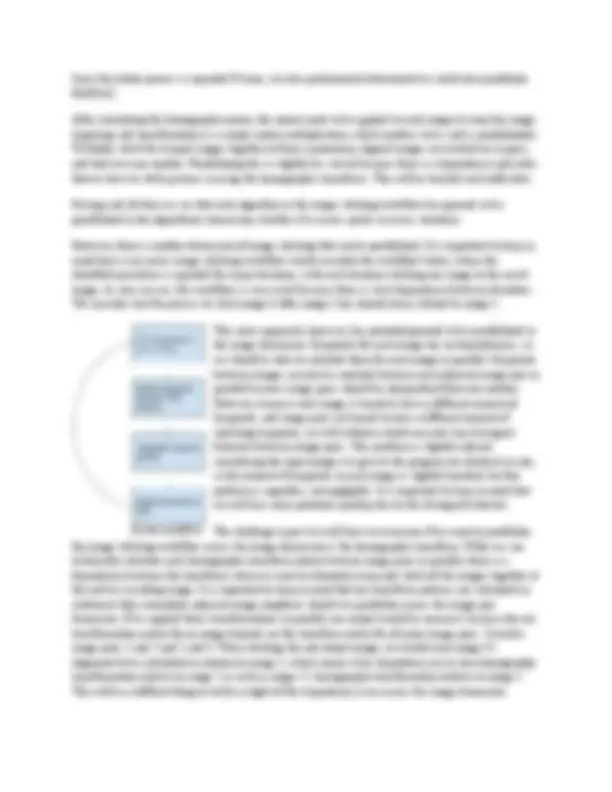
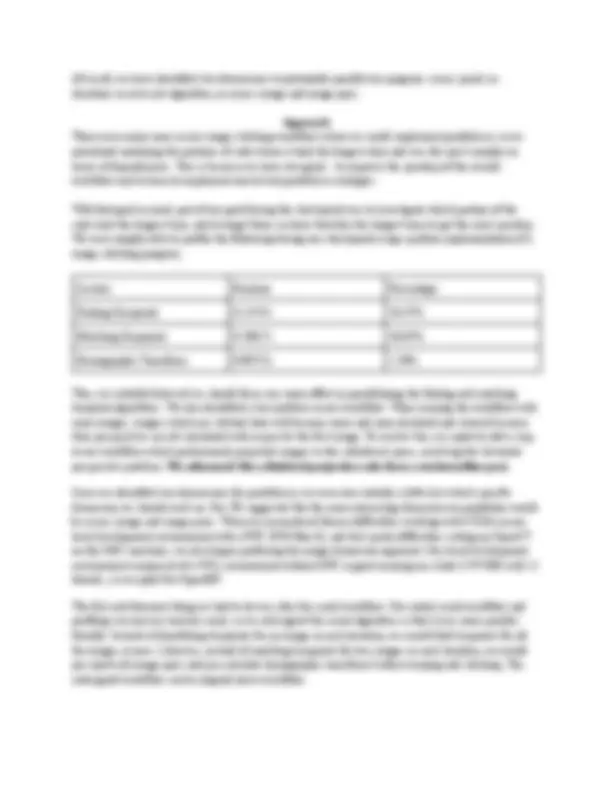
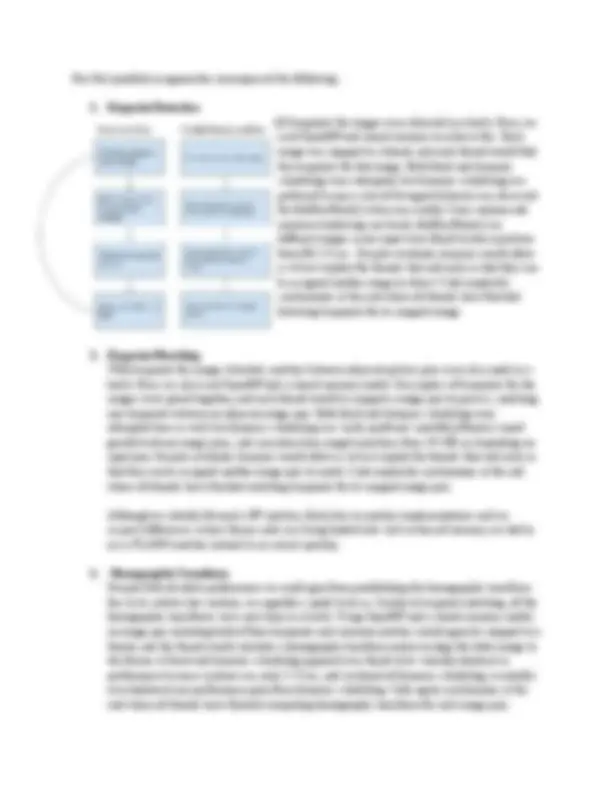
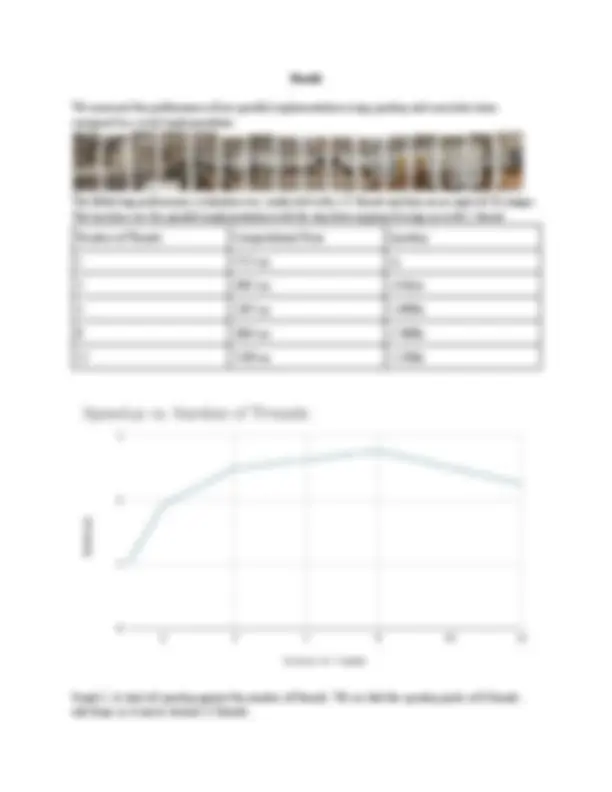
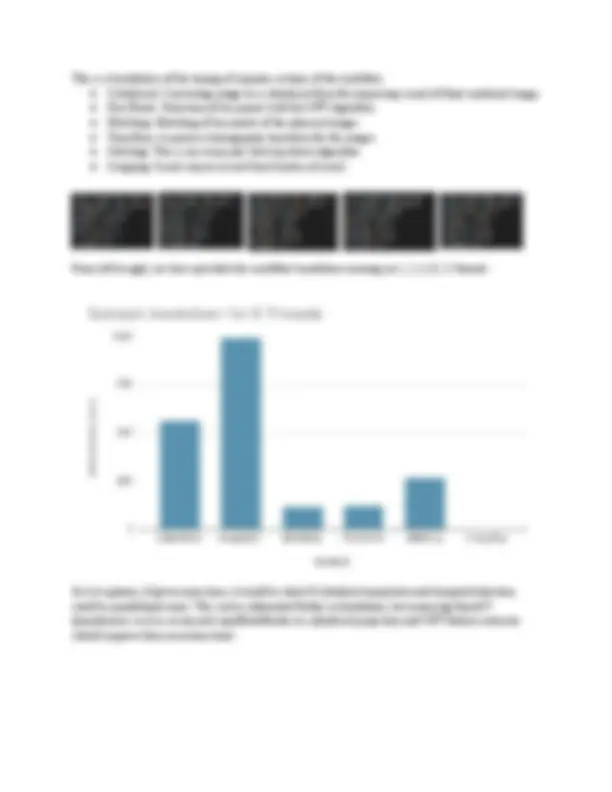
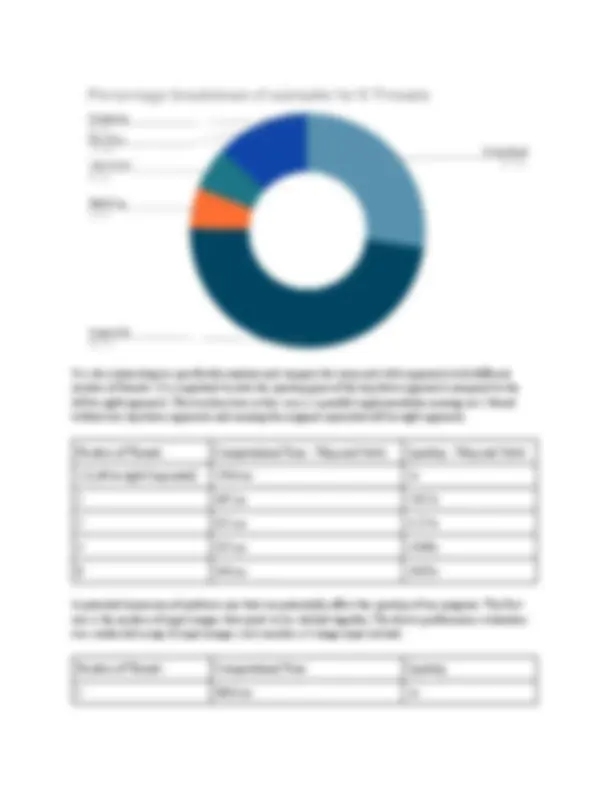
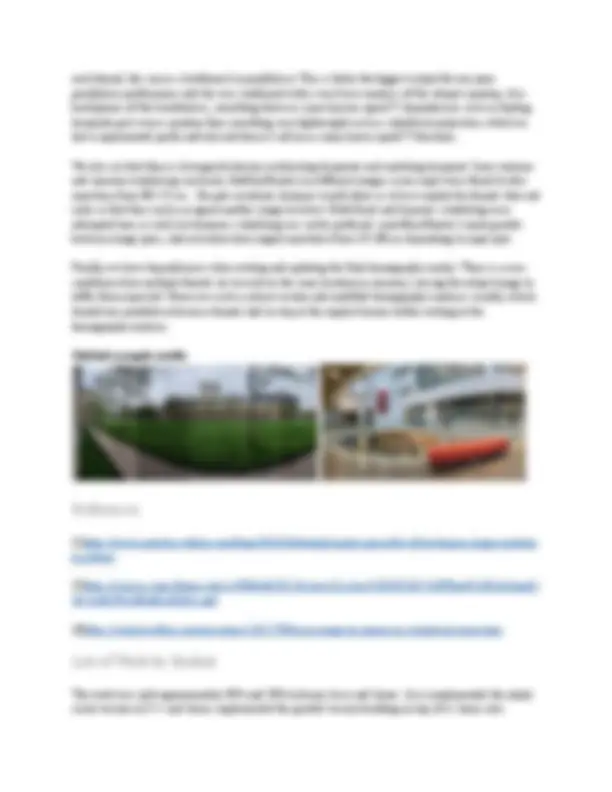



Study with the several resources on Docsity

Earn points by helping other students or get them with a premium plan


Prepare for your exams
Study with the several resources on Docsity

Earn points to download
Earn points by helping other students or get them with a premium plan
Community
Ask the community for help and clear up your study doubts
Discover the best universities in your country according to Docsity users
Free resources
Download our free guides on studying techniques, anxiety management strategies, and thesis advice from Docsity tutors
This project will explore the level of parallelism that can be applied to various parts of the image stitching workflow.
Typology: Slides
Uploaded on 03/20/2024
1 document
1 / 14

This page cannot be seen from the preview
Don't miss anything!









James Li, Jesse Chan Summary This project will explore the level of parallelism that can be applied to various parts of the image stitching workflow. An image stitching workflow typically comprises finding keypoints in images, matching keypoints, finding homographic transforms, and warping and stitching the images. To improve the quality of the output, an additional step was added to the beginning of the workflow, which projected images to a cylindrical space. A serial image stitching program was implemented detailing these steps using C++, and each step was then parallized using OpenMP in a parallel version. The cydrincical perspective transformation was parallelized across the image dimension using OpenMP. Keypoints in images were found using the scale-invariant feature transform (SIFT) algorithm and parallelized across the image dimension using OpenMP. Keypoints matching was done using a Fast Library for Approximate Nearest Neighbors (FLANN) matcher and also parallelized across the image dimension also using OpenMP. Homographic transformation was also parallelized across the image dimension using OpenMP. Warping and stitching was parallelized across image pair dimensions using OpenMP. Performance between the serial and parallel version of the image stitching program was then compared. Our parallel implementation using OpenMP running on 8 cores was able to achieve a 2.76x speedup compared to the serial version stitching a panorama of 8 images. Background To stitch two images together, we need to roughly follow the following workflow:
Since this process is repeated many times in the SIFT algorithm in what are called octaves, there is large grounds for potential speedup here. Further along the SIFT workflow, difference of gaussian is also taken where pixels from different blurs are subtracted from one another. This is again easily parallelizable in the pixel dimension due to a lack of pixel dependency. Local pixel minima and maxima are then found using sampling windows, which is again a simple thing to parallelize across the pixel dimension. Needless to say, SIFT has a lot of potential to be parallelized across the pixel dimension. After identifying keypoints and key features in each image, we will need to match these points and features between different images. To do so, we need to make pairs between keypoints of images so that the Euclidian distance between keypoints are minimized. We briefly explored and compared FLANN matching and Brute Force (BF) matching for this subtask to determine which algorithm can benefit more from parallelism. We initially leaned towards BF matching due to its simple nature of iterating between pairs of keypoints, which could be easily parallelized. Having finally identified matching keypoints, the image stitching workflow then takes these matching points to calculate the homographic matrix that needs to be applied to the images such that they all align properly. The homographic matrix encompasses transformations such as rotation, translation, and perspective transformation. We preliminarily explored homography estimation with RANSAC (Random Sample Consensus) algorithm. Automatic Homography Estimation with RANSAC
All in all, we have identified two dimensions to potentially parallel our program: across pixels or iterations in each sub-algorithm, or across image and image pairs. Approach There were many areas in our image stitching workflow where we could implement parallelism, so we prioritized analyzing the portions of code where it took the longest time and was the most complex in terms of dependencies. This is because we have two goals - to improve the speedup of the overall workflow and to learn to implement non-trivial parallelism strategies. With that goal in mind, part of our goal during the checkpoint was to investigate which portion of the code took the longest time, and to target those sections that take the longest time to get the most speedup. We were roughly able to profile the following during our checkpoint using a python implementation of a image stitching program. Section Runtime Percentage Finding Keypoints 0.14747s 56.47% Matching Keypoints 0.10617s 40.65% Homographic Transform 0.00752s 2.28% Thus, we initially believed we should focus our main effort on parallelizing the finding and matching keypoint algorithms. We also identified a key problem in our workflow. When running the workflow with more images, images which are stitched later will become more and more distorted and skewed because their perspectives are all calculated with respect to the first image. To resolve this, we opted to add a step to our workflow which preliminarily projected images to the cylindrical space, resolving this distorted perspective problem. We referenced this cylindrical projection code from a stackoverflow post. Since we identified two dimensions for parallelism, we were also initially a little lost which specific dimension we should work on. Our TA suggested that the more interesting dimension to parallelize would be across image and image pairs. When we encountered library difficulties working with CUDA on our local development environment with a RTX 2070 Max-Q, and disk quota difficulties setting up OpenCV on the GHC machines, we also begun preferring the image dimension approach. Our local development environment comprised of a WSL environment without GPU support running on a Intel i7-9750H with 12 threads, so we opted for OpenMP. The first and foremost thing we had to do was alter the serial workflow. Our initial serial workflow and profiling version was heavily serial, so we redesigned the serial algorithm so that it was more parallel friendly. Instead of identifying keypoints for an image in each iteration, we would find keypoints for all the images at once. Likewise, instead of matching keypoints for two images in each iteration, we would pre-match all image pairs and pre-calculate homographic transforms before warping and stitching. The redesigned workflow can be original naive workflow.
Our first parallelism approaches encompassed the following:
1. Keypoint Detection All keypoints for images were detected in a batch. Here, we used OpenMP and shared memory to achieve this. Each image was mapped to a thread, and each thread would find the keypoints for that image. Both fixed and dynamic scheduling were attempted, but dynamic scheduling was preferred because a lot of divergent behavior was observed for findKeyPoints() when run serially. Since minima and maxima windowing can break, findKeyPoints() on different images in our input were found to take anywhere from 80-125 ms. Despite overhead, dynamic would allow us to best exploit the threads that end early so that they can be assigned another image to detect. Code implicitly synchronizes at the end where all threads have finished detecting keypoints for its mapped image. 2. Keypoint Matching With keypoints for images detected, matches between adjacent picture pairs were also made in a batch. Here, we also used OpenMP and a shared memory model. Descriptors of keypoints for the images were paired together, and each thread would be mapped a image pair to process, matching any keypoints between an adjacent image pair. Both fixed and dynamic scheduling were attempted here as well, but dynamic scheduling was vastly preferred. matchKeyPoints() varied greatly between image pairs, and execution time ranged anywhere from 19-108 ms depending on input pair. Despite overhead, dynamic would allow us to best exploit the threads that end early so that they can be assigned another image pair to match. Code implicitly synchronizes at the end where all threads have finished matching keypoints for its mapped image pair. Although we initially favored a BF matcher, likely due to matcher implementations and we suspect differences in how library code was being loaded into .text section of memory, we had to use a FLANN matcher instead to see actual speedup. 3. Homographic Transform Despite little absolute performance we could gain from parallelizing the homographic transform due to its relative low runtime, we regardless opted to do so. Similar to keypoint matching, all the homographic transforms were now done in a batch. Using OpenMP and a shared memory model, an image pair including both of their keypoints and common matches would again be mapped to a thread, and the thread would calculate a homography transform matrix to align the latter image to the former. A fixed and dynamic scheduling approach was found to be virtually identical in performance because runtime was only 2-13 ms, and overhead of dynamic scheduling essentially overshadowed any performance gain from dynamic scheduling. Code again synchronizes at the end where all threads have finished computing homographic transform for each image pair.
homography transform matrix. Although we have removed a lot of dependencies, there is still a dependency of the second result image on the first. With this in mind, we set out to parallelize the warping and stitching using OpenMP. This top-down tree parallel approach effectively reduces our runtime to 𝑙𝑜𝑔 2 𝑁iterations, or O(logN). This is significantly better than the native serial runtime of N-1 stitching iterations, or O(N). Using OpenMP and a shared memory model, image pairs that do not share images are mapped to a thread, and the thread accordingly warps and stitches the images according to their homography transform matrices. Their homography transform matrices is then written to an array for use later in the next iteration. This is repeated as many times until all images are stitched to a single image. Code synchronizes every iteration because every new iteration depends on the homography matrices that are accumulated in the last iteration. A dynamic scheduling scheme was opted because different amounts of pixels are overwritten depending where the image is stitched, so each thread can run for different amounts of time. Despite overhead, dynamic would allow us to best exploit the threads that end early so that they can be assigned another image pair to stitch. While implementing this top-down approach, we also encountered a bug where we would occasionally run into segmentation fault or run into very erroneous output. This was found out to be a racing condition where multiple threads was simultaneously reading and modifying homography matrix data, causing erroneous transformations. This bug was resolved once homography matrix writes were moved out of the omp block into a critical serial section Do note that the coloration differences in the resulting panorama is due to a lack of blurring.
Result We measured the performance of our parallel implementation using speedup and execution times compared to a serial implementation. The following performance evaluation was conducted with a 12 thread machine on an input of 16 images. The baseline was the parallel implementation with the top-down approach being run with 1 thread. Number of Threads Computational Time Speedup 1 5715 ms 1x 2 2967 ms 1.9261x 4 2287 ms 2.4989x 8 2064 ms 2.7688x 12 2539 ms 2.2508x Graph 1: A chart of speedup against the number of threads. We see that the speedup peaks at 8 threads. and drops as it moves toward 12 threads.
It is also interesting to specifically analyze and compare the warp and stitch approach with different number of threads. It is important to note the speedup gain of the top-down approach compared to the left-to-right approach. The baseline here in this case is a parallel implementation running on 1 thread without our top-down approach and running the original sequential left-to-right approach. Number of Threads Computational Time - Warp and Stitch Speedup - Warp and Stitch 1 (Left-to-right Sequential) 1316 ms 1x 1 467 ms 2.817x 2 312 ms 4.217x 4 325 ms 4.049x 8 343 ms 3.837x A potential dimension of problem size that can potentially affect the speedup of our program. The first one is the number of input images that needs to be stitched together. The above performance evaluation was conducted using 16 input images, but consider a 4 image input instead. Number of Threads Computational Time Speedup 1 3616 ms 1x
2 2368 ms 1.5270x 4 1813 ms 1.9944x 8 1685ms 2.1459x 12 1755 ms 2.0603x As we can see, the performance speedup has decreased quite a bit for an input of 4 images as we increase the number of threads. This is because there are less images and image pairs all the threads can work with, since there are only 4 images and 3 image pairs given these inputs. We end up wasting a lot of threads as a result. Our implementation speedup will increase the more the images in a given input. The following graph visualizes the speedup increase we get the more input images we have. A second potential problem size that can affect the speedup of our program that we investigated is the size of the image that is being fed as input. We initially did not think it would have any effect on the speedup because the number of keypoints and matches should be relatively proportional to the image size. Since images of the same size should have the same magnitude of matches, the threads should not get more divergent just because we increase or decrease the size of the input images. We conducted this experiment by horizontal cropping images to small and mini dimensions while keeping the width the same; original images were 2844 pixels heightwise, the small dataset was cropped to 1700 pixels heightwise, and mini dataset was cropped to 836 pixels heightwise. The same images at different dimensions was then fed as input sets to the program. Our experiments confirmed our hypothesis that image size has no impact on performance or speedup gain.
each thread, this causes a bottleneck in parallelism. This is likely the biggest culprit for our poor parallelism performance and this was confirmed with a very basic analysis of the subpart speedup. At a brief glance of the breakdowns, something that uses more heavier openCV dependencies such as finding keypoints gets worse speedup than something very lightweight such as cylindrical projection, which we have implemented partly natively and doesn’t call on as many heavy openCV functions. We also see that there is divergent behavior in detecting keypoints and matching keypoint. Since minima and maxima windowing can break, findKeyPoints() on different images in our input were found to take anywhere from 80-125 ms. Despite overhead, dynamic would allow us to best exploit the threads that end early so that they can be assigned another image to detect. Both fixed and dynamic scheduling were attempted here as well, but dynamic scheduling was vastly preferred. matchKeyPoints() varied greatly between image pairs, and execution time ranged anywhere from 19-108 ms depending on input pair. Finally, we have dependencies when writing and updating the final homography matrix. There is a race condition when multiple threads try to write to the same location in memory, causing the output image to differ from expected. Hence we used a critical section and modified homography matrices serially, which limited our parallelism because threads had to stop at the implicit barrier before writing to the homography matrices. Stitched example results
[1]https://www.analyticsvidhya.com/blog/2019/10/detailed-guide-powerful-sift-technique-image-matchin g-python/ [2]https://courses.engr.illinois.edu/cs498dh/fa2011/lectures/Lecture%2018%20-%20Photo%20Stitching% 20-%20CP%20Fall%202011.pdf [3]https://stackoverflow.com/questions/12017790/warp-image-to-appear-in-cylindrical-projection
The work was split approximately 50% and 50% between Jesse and James. Jesse implemented the initial serial version in C++ and James implemented the parallel version building on top of it. James also
implemented the top-down warp and stitch approach. The writeup was written collaboratively and the video was edited by Jesse.